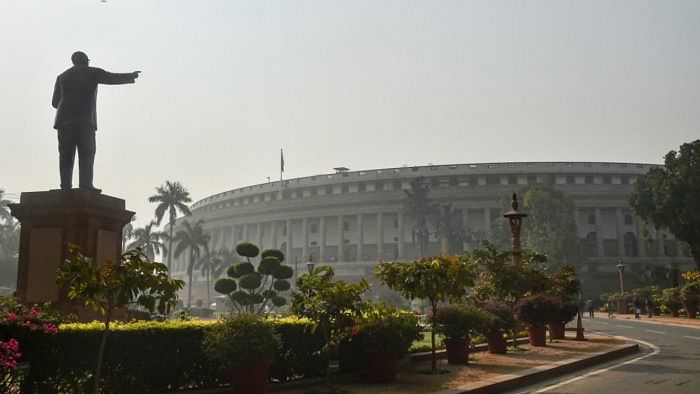
Twenty years ago, Parliament, the supreme legislative body of India, witnessed a dastardly terror attack that shook the conscience of the country to its core.
Even after two decades, the horror of the day, December 13, 2001, is still fresh in the minds of the citizens.
The ill-fated morning of December 13, 2001
On the morning of December 13, 2001, five terrorists of militant groups Lashkar-e-Taiba (LeT) and Jaish-e-Mohammed (JeM) infiltrated the premises in a White Ambassador bearing fake stickers of the Home Ministry and Parliament.
Carrying AK47 rifles, grenade launchers, pistols and grenades, the terrorists breached through security cordons deployed around the Parliament complex.
As they further drove the car inside, one of the staff members, Constable Kamlesh Kumari Yadav, became suspicious of their movement.
Yadav was the first security official to approach the terrorists' car and, realising something suspicious, ran back to her post to seal gate no 1 where she was posted. With their cover effectively blown, the terrorists opened fire on Yadav and fired at her 11 times.
Yadav died on the spot, averting a suicide bomber among the terrorists to execute his plan.
After killing Yadav, the terrorists moved forward, firing indiscriminately.
The horror lasted for about 30 minutes during which nine people were killed and 18 others injured. Around 100 ministers and MPs who were present in the Parliament were unhurt.
All the five terrorists were also neutralised outside the building.
What happened after that?
On the same day, the police lodged an FIR, recording the attack on Parliament.
The anti-terror unit of the Delhi Police-- Special Cell, arrested the four other individuals named Mohammed Afzal Guru, Shaukat Husain Guru, Afsan Guru and SAR Geelani, who was involved in the attack, through the leads of the car that was used and cellphone records.
Mohammed Afzal Guru was a former militia of the Jammu Kashmir Liberation Front (JKLF) who had surrendered in 1994 and SAR Geelani was a lecturer of Arabic at Delhi University.
Also Read | Nation shall forever be grateful to security personnel who died defending Parliament: President Kovind
Later, on December 29, Afzal Guru was kept in police remand. The trial court acquitted Afsan Guru, however, Geelani, Shukat and Afzal Guru were sentenced to death by the trial court.
In 2003, SAR Geelani was exonerated.
In 2005, Supreme Court upheld Afzal Guru's death sentence but Shaukat was sentenced to 10 years of rigorous punishment.
On September 26, 2006, the court ordered that Afzal Guru be hanged.
In October the same year, Afzal Guru's wife, Tabassum Guru, filed a mercy petition which was dismissed by the Supreme Court. On February 3, his mercy petition was rejected by then President Pranab Mukherjee.
On February 9, 2013, Afzal Guru was hanged in Tihar Jail and his remains were not handed over to his family but buried in Tihar jail.
Check out the latest videos from DH: